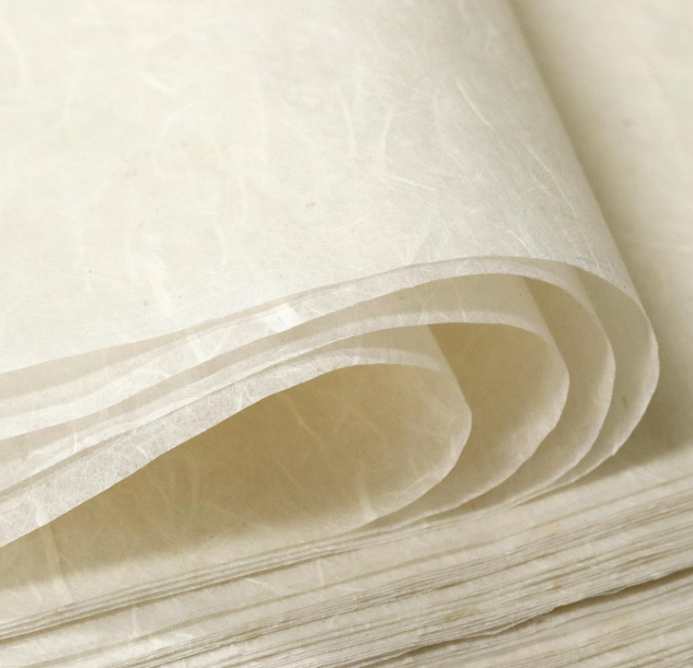Glassine Paper: What Is It & How Is It Used for Packaging
In the packaging industry, materials that blend sustainability with functionality have long been a popular topic. As brands shift from traditional plastics to eco-friendly options, glassine paper is making a comeback with its unique qualities of lightness, transparency, and environmental friendliness.
As a provider of customized flexible packaging solutions, MTPAK, leveraging its experience working with brands across various sectors, explains what glassine paper is and its benefits for the packaging industry. Join MTPAK as we clarify what cellophane is and explore how its unique properties are transforming the packaging world.
What is Glassine Paper?
Glassine Paper is a high-density, high-gloss paper produced through a supercalendering process. Its fibers are extremely compacted, creating a natural barrier against grease and moisture, achieving excellent barrier properties without the need for plastic coating.
Key features include:
High Barrier: Naturally grease-resistant and with a low water vapor transmission rate (WVTR), it effectively protects contents.
Environmental: Typically recyclable and compostable, and easily eligible for FSC/PEFC sustainable forest certification.
Aesthetics: Its translucent, smooth surface imparts a premium, hazy aesthetic to products, enhancing the unpacking experience.
Printability: Suitable for flexographic and gravure printing, it effectively displays brand colors and designs.
In Which Industries Does Glassine Paper Excel?
Thanks to its smooth, translucent appearance, oil and moisture resistance, and sustainable nature, Glassine Paper demonstrates excellent suitability and visual appeal in packaging across a wide range of industries.
In the coffee and tea industry, Glassine Paper is commonly used in sample bags, filter coffee envelopes, and label inserts. Its translucent texture naturally showcases the color and texture of coffee beans or tea leaves, helping brands create a sense of "visible quality." Furthermore, its oil and moisture resistance effectively prevents aroma loss, preserving product freshness.
In bakery and dessert packaging, Glassine Paper's oil and heat resistance are particularly outstanding. It can be used as wrappers, liners, and inner linings for foods such as cookies, egg tarts, and croissants, preventing oil seepage while maintaining a clean, tidy packaging and meeting food safety standards (FDA and EU food contact regulations).
The cultural and creative industries and giftware industries leverage Glassine Paper's soft transparency and natural sheen to enhance brand visuals. Whether used as gift box lining, sticker backing, or envelope wrappers, Glassine Paper delivers a simple and elegant unboxing experience, enhancing brand packaging's environmentally friendly and refined aesthetic.
Furthermore, in cosmetics and electronics packaging, Glassine Paper is used as a scratch-resistant interlayer or cushioning material to prevent damage during shipping while reducing reliance on plastic film.
Overall, Glassine Paper has become a versatile packaging material across multiple industries, combining visual beauty, functional performance, and environmental value.
How to determine if Glassine Paper is suitable for your product?
Choosing the right packaging material not only impacts product safety but also shapes your brand's visual presentation and sustainable image. To determine whether Glassine Paper is suitable for your product, consider the following aspects:
First, product attributes are the most crucial consideration.
If your product is dry food, coffee beans, tea, baked snacks, stickers, or cultural and creative products, and requires high-quality packaging that is oil-resistant, moisture-proof, and clean, then Glassine Paper is an ideal choice. Its high-density fiber structure effectively blocks grease and moisture, preventing deformation and contamination of the contents.
Second, consider your brand positioning and visual needs.
Glassine Paper's translucent texture naturally reveals the color and shape of the product inside, making it particularly suitable for brands focused on display packaging. For example, coffee roasters can use it to showcase the freshness of their beans, while cultural and creative brands can leverage its delicate luster to create a high-end, minimalist unboxing experience.
Finally, evaluating packaging compatibility is crucial.
If your product requires brand logo printing or packaging, Glassine Paper offers various weights and laminating options (such as PE, PLA, or bio-based films) to ensure stable performance on heat-sealing, flexographic, silk-screen, and automated packaging equipment.
In short, when you're looking to balance environmental performance, visual appeal, and functionality, Glassine Paper often offers the best balance.
FAQ:
1. Can Glassine Paper come into direct contact with food?
Yes. Glassine paper is made from 100% virgin wood pulp and contains no plastic, wax, or harmful chemicals. It complies with FDA food contact standards and EU Food Safety Regulation (EC No. 1935/2004).
2. What is the difference between Glassine Paper and Wax Paper?
Glassine paper is calendered to create a dense structure, making it oil- and moisture-resistant and recyclable. Wax paper, on the other hand, is coated with wax for protection and is not easily recyclable. Glassine paper is more environmentally friendly and offers a more premium feel, while wax paper is more suitable for short-term, disposable use.
3. Can Glassine Paper be printed or heat-sealed?
Yes. Calendered Glassine Paper offers excellent print adhesion and is suitable for various printing processes, including flexo, UV, and water-based inks. Customization with brand logos, text, and images is possible.
If sealing or bag structure is required, we recommend laminating the Glassine Paper surface with a PE or PLA layer to achieve a high-temperature heat-sealing effect and ensure the consistency of packaging strength and appearance.
Conclusion
Glassine Paper, with its unique combination of properties, bridges product protection, consumer experience, and sustainability goals for brands across multiple industries. Whether protecting food flavor, enhancing the luxury of cosmetics, or protecting delicate components, it proves that environmental protection and functionality can go hand in hand.
As your reliable flexible packaging partner, MTPAK has extensive material knowledge and customization experience, offering one-stop glassine paper packaging solutions, from design and compliance certification to rapid proofing and mass production. Contact MTPAK to customize your personalized protection.
Email:account@mtpak.com
Contact us:https://mtpak.com/contact-mtpak



